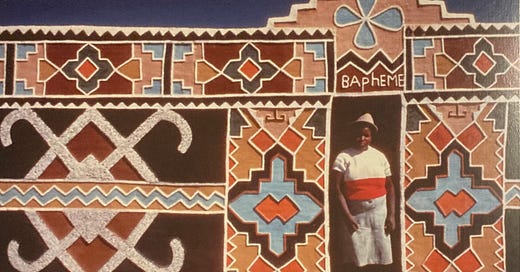2022 list of best books about Africa to help you unwind after work
I thought of putting up a list of readings I have enjoyed this year, free time readings, the ones I eager for when I need to clear my mind from work (even if my free time readings are often still about Africa). I am an unreasonable person with lists — there will always be one or more items missing in my lists. So, I am sure other books could be included in the one below, but these are the ones that come to mind right now, when thinking of stuff I have read to relax, recharge my energies or finish the day, and that have had a long-lasting effect (sometimes this also has to do with the moment I read them: the right book at the right time becomes a favourite). I like checking the lists of others, so I am making a list for others to check 🙃
Here’s my 2022 list of best books about Africa to help you unwind after work (a silly title, I reckon).
Happy new year, friends.
.
.
Barnes, J. Staple security — Bread and wheat in Egypt.
This was such a pleasure to read. The tone is light, but so knowledge-dense; a proof that scientific and beautiful writing do not collide. It deals with the affective dimension of staple food, analysing the case of bread in Egypt.
Smoot, M. S. Huts — the vanishing rural traditions and vernacular architecture found in the 1980s Southern Africa.
This is mostly a photo book, but also a memory book of the period when the author travelled around Southern African rural areas, during the 80s, to see and visit self-built homes of indigenous people. These architecture and decorative arts are now a rarity, and we must be thankful to those who have found a way to record them. The bits of text that contextualise the book present the humble, passionate man behind the pictures.
Metcalfe, D. Blue dahlia, black gold — a journey into Angola.
I am an enthusiast of travel literature, whatever the era. This one describes the author’s journey through Angola, during what would be the last decade of the JES presidency: a quickly-changing, complex nation, reluctant to get to grips with its past and to take up its future.
Figueiredo, I. Caderno de memórias coloniais.
The book is a testimony of the author’s childhood memories in Mozambique, during the 60s. This has left the same impression on me as Lobo Antunes’ Os Cus de Judas, some years ago.
Slimani, L. In the country of others.
Slimani is overrated by critics and publishers, but that is not to deny that she is a pleasure to read — she is indeed, though her writing is not as much as some make of it. In this novel, it feels like Slimani’s writing has evolved, become more exploratory. Based on her own family history, it narrates the romance between a French woman and a Moroccan man, covering a ten-year span when tensions and violence grow, leading to the independence of Morocco in 1956.
Ferreira, S. Cadernos do Chade — Dias de pó na fronteira do Darfur.
I wanted to read this one for quite a while now (it was published 10 years ago). It was quick to read but very to the point on describing the practical experience of doing humanitarian work. I enjoyed reading the descriptions of life in Chad too. The original is in Portuguese and I am not sure whether translations exist.
Mengiste, M. The shadow king.
I am actually still finishing this one, but, as others (many) have pointed out, this is a wonderful novel. This is 400 and something pages, but worth every minute you take to read it. I have started it last week, and I am enjoying the rainy days to read it.
Huntley, B. J. et al. Biodiversidade em Angola.
This is a big book about biodiversity in Angola, not to be read in one go. If you are passionate about Angola and its biodiversity (Angola is the second country with the greatest biological diversity in the continent) — and if you read in Portuguese, of course, then this is a marvellous edition to have on your bookshelf.
Kpomassie, T.-M. An African in Greenland.
One often reads stories of people visiting Africa, but rarely (although more and more often, now) of Africans visiting other places. Tété-Michel Kpomassie got obsessed with Greenland when he found a book about Eskimos in a bookshop in Togo, where he is from. This event traced his destiny. The book is about his journey from Togo to Greenland. His writing is uplifting, good-spirited and is also helpful in debunking some stereotypes of Europeans held by Africans.
Temudo, A.; Mendes A.; Sarro, R. O museu etnográfico nacional da Guiné-Bissau: imagens para uma história.
Much of it is a photo book documenting the fieldwork collection and cataloguing work prior to the inauguration of the Guinea-Bissau’s national ethnographic museum. I am happy to see that someone is looking after and studying this heritage.
Wainaina, B. One day I will write about this place.
Binyavanga Wainaina’s writing is powerful. He is loud, colourful, wise. In this book, he takes us through his middle-class childhood, in Kenya. I loved it. This memoir was his debut novel.
Pires de Lima, F. C. A arte popular em Portugal.
Okay, this one should not even be in this list. My husband and I have just bought it and we are thrilled. This was a (sort of) Christmas gift from us to us — i.e., the sort of excuse we give ourselves when we want (need!) to buy something a bit too expensive. This a three-volume collection from the late 60s; a bible on popular art from Portugal and its former colonies, Cape Verde, Guinea-Bissau, Angola, Mozambique (by Jorge and Margot Dias), India, Macau and Timor.




